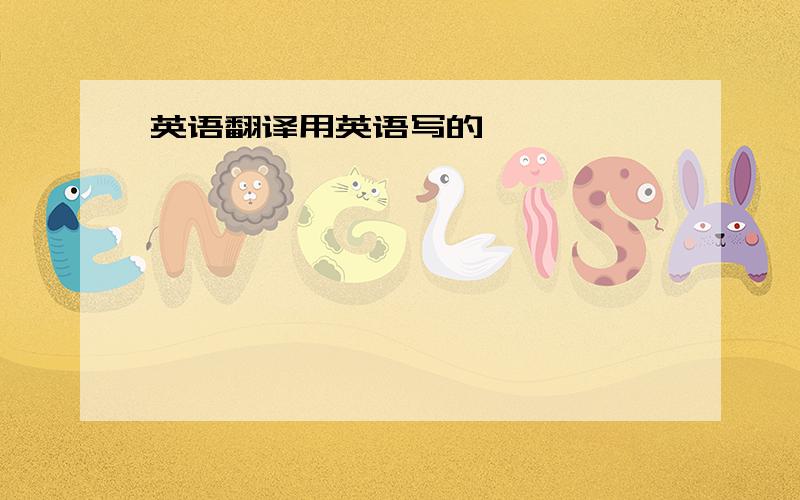英语翻译用英语写的
来源:学生作业帮助网 编辑:作业帮 时间:2024/11/15 12:34:35

英语翻译用英语写的
英语翻译
用英语写的
英语翻译用英语写的
Spring Festival brief
Spring Festival,the Lunar first day of the first lunar month,known as the Moon,commonly known as the "New Year." 这是我国民间最隆重、最热闹的一个传统节日.This is the most impressive people,the most popular traditional festival.春节的历史很悠久,它起源于殷商时期年头岁尾的祭神祭祖活动.The long history of the Spring Festival,which originated in the Shang period the year draws to a close servicemen and the memorial activities.按照我国农历,正月初一古称元日、元辰、元正、元朔、元旦等,俗称年初一,到了民国时期,改用公历,公历的一月一日称为元旦,把农历的一月一日叫春节.According to China's Lunar,the first day of the first lunar month yen ancient name,Yuan-chen,a copy,is Emperor,the New Year Day,which is commonly known as Day of the Republic.switch to the Gregorian calendar,the calendar on January 1 as New Year's Day,January 1st called the Lunar Spring Festival.
For thousands of years,people have become so very colorful,secular celebrations.played on the 23rd day of the Lunar New Year's Eve every year,this period of time people called "auspicious day",also known as "Anti-dust Day." Before the Spring Festival dust engage health of our people have habits and traditions.
The Origin of Chinese New Year
The Chinese New Year is now popularly known as the Spring Festival because it starts from the Begining of Spring (the first of the twenty-four terms in coodination ...
全部展开
The Origin of Chinese New Year
The Chinese New Year is now popularly known as the Spring Festival because it starts from the Begining of Spring (the first of the twenty-four terms in coodination with the changes of Nature). Its origin is too old to be traced. Several explanations are hanging around. All agree, however, that the word Nian, which in modern Chinese solely means year, was originally the name of a monster beast that started to prey on people the night before the beginning of a new year.
One legend goes that the beast Nian had a very big mouth that would swallow a great many people with one bite. People were very scared. One day, an old man came to their rescue, offering to subdue Nian. To Nian he said, I hear say that you are very capable, but can you swallow the other beasts of prey on earth instead of people who are by no means of your worthy opponents? So, it did swallow many of the beasts of prey on earth that also harrassed people and their domestic animals from time to time.
After that, the old man disappeared riding the beast Nian. He turned out to be an immortal god. Now that Nian is gone and other beasts of prey are also scared into forests, people begin to enjoy their peaceful life. Before the old man left, he had told people to put up red paper decorations on their windows and doors at each year's end to scare away Nian in case it sneaked back again, because red is the color the beast feared the most.
From then on, the tradition of observing the conquest of Nian is carried on from generation to generation. The term Guo Nian, which may mean Survive the Nian becomes today Celebrate the (New) Year as the word guo in Chinese having both the meaning of pass-over and observe. The custom of putting up red paper and firing fire-crackers to scare away Nian should it have a chance to run loose is still around. However, people today have long forgotten why they are doing all this, except that they feel the color and the sound add to the excitement of the celebration.
收起